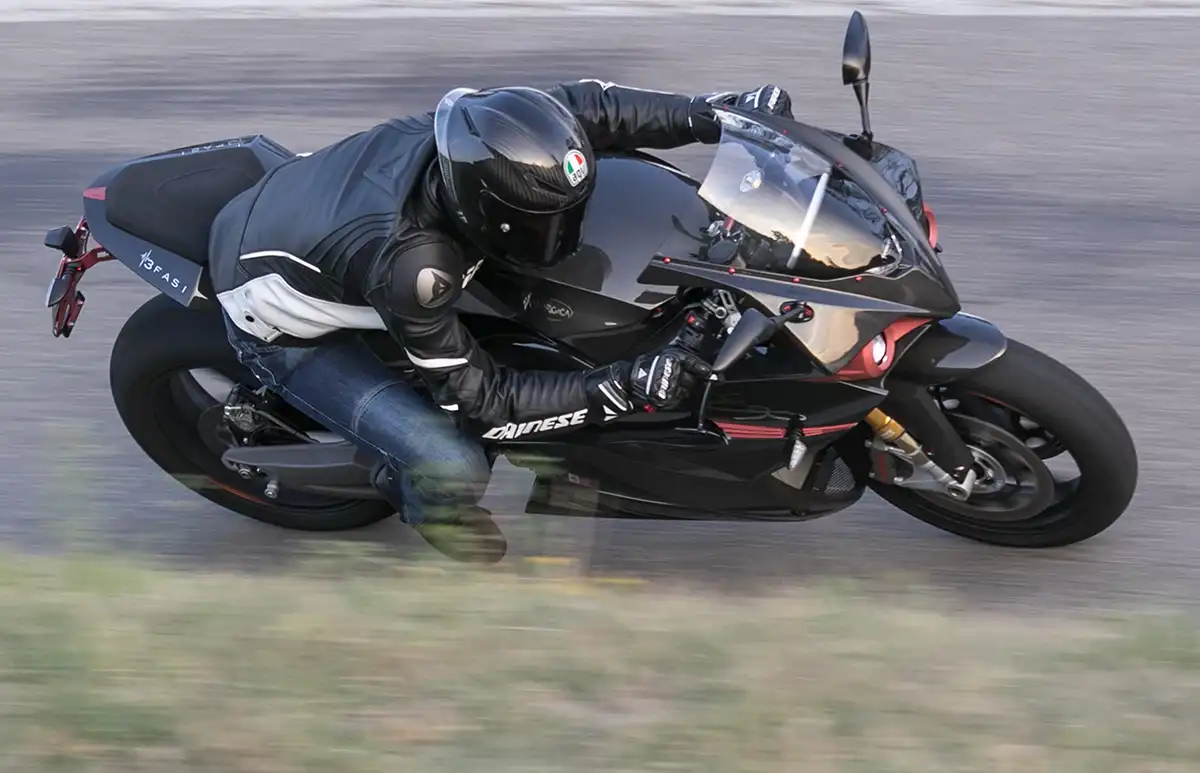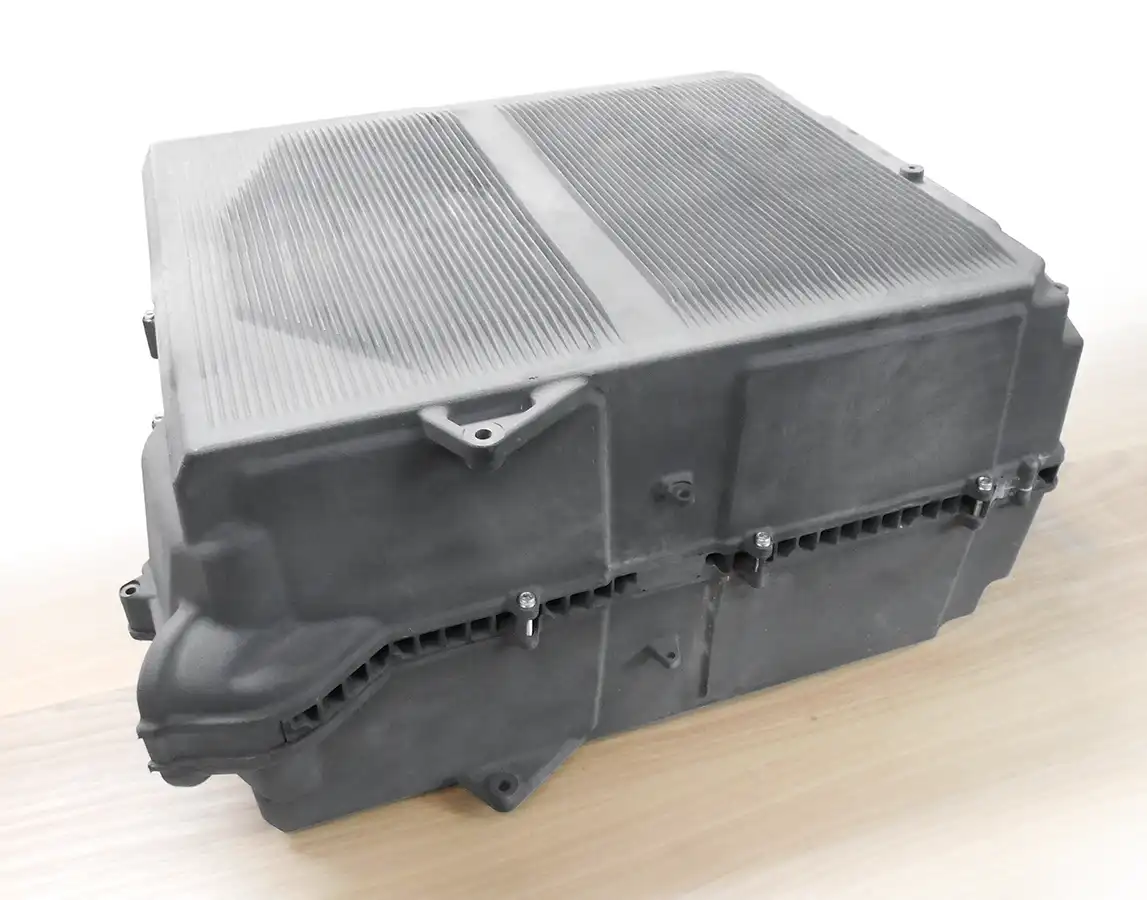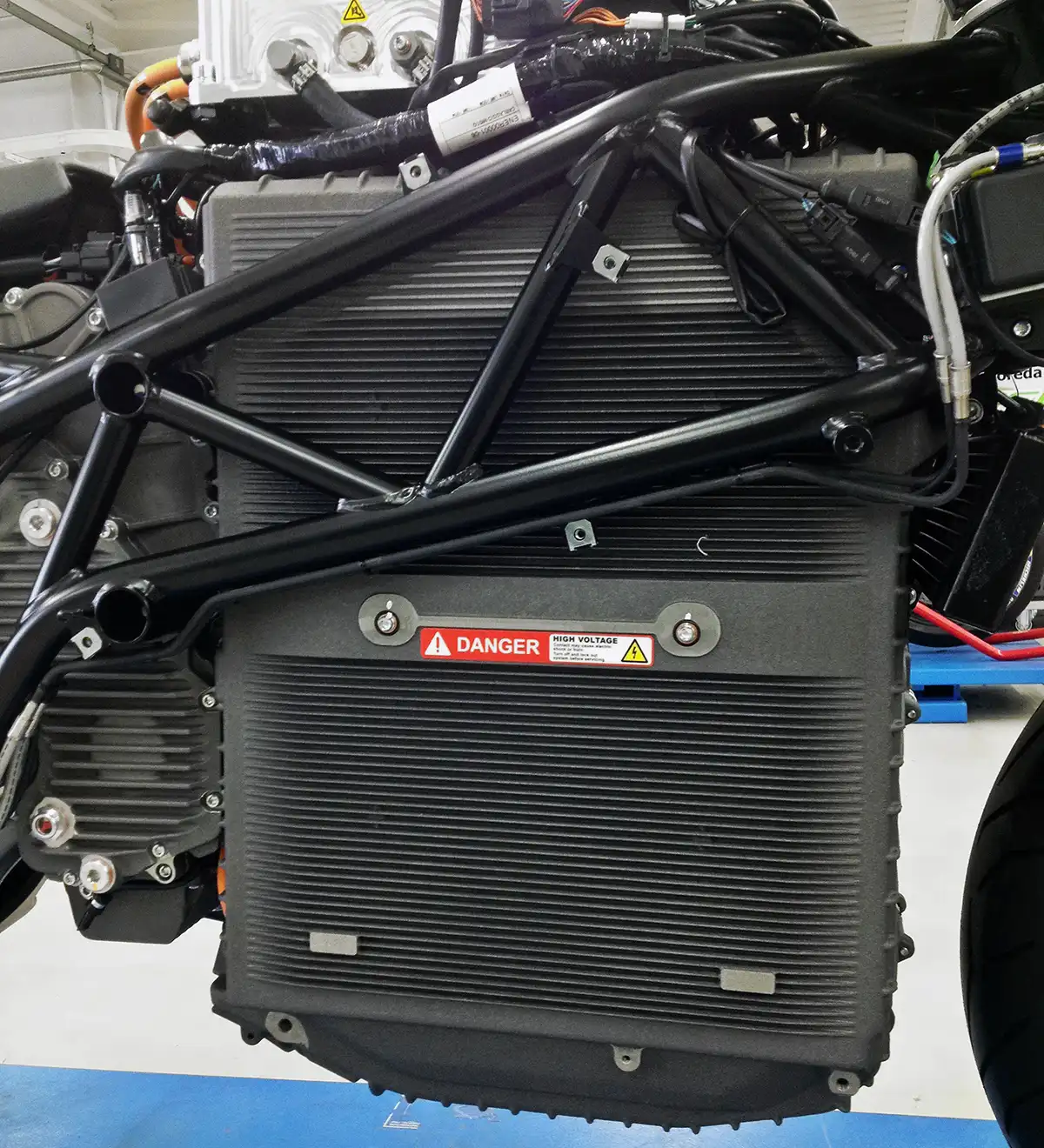3D printing (Selective Laser Sintering); Precision CNC Machining; Aluminum Rapid Casting and CNC machining; Sand Casting
Windform LX 2.0 (functional prototype), aluminum alloy (production)
Battery housing for high-performance electric motorcycles
Manufacturing a robust and precise aluminum battery housing that ensures effective cooling, electromagnetic shielding, and crash protection, while achieving tight tolerances throughout all production phases

CRP Meccanica and CRP Technology teamed up with Energica Motor Company to develop the battery housing system at the heart of their electric motorcycles. This isn’t just a casing – it’s a multi-functional sealed enclosure designed to contain and protect high-voltage battery cells and the Battery Management System (BMS).
The unit had to perform under acceleration and fast charging, while remaining electrically safe, thermally stable, mechanically strong, and ready for EMC testing. It also had to be brought into series production on a tight schedule.
The development began with a full-scale prototype produced by Selective Laser Sintering (SLS) using Windform LX 2.0, a glass fiber-reinforced polyamide. Chosen for its high temperature resistance and electrical insulation, this material allowed direct R&D and testing on a working component.
Thanks to the large-format 3D printing systems at CRP Technology (build size: 550 x 550 x 450 mm), the team was able to print the entire prototype in one piece—an uncommon capability among service providers.
The prototype included the central septum, an aluminum plate integrated into the final product, which directs airflow to prevent battery overheating during acceleration or fast charging.

The second step was a rapid casting of the battery housing in aluminum, followed by CNC machining at CRP Meccanica. The structure – made of two shells – had to maintain dimensional accuracy, resist distortion, and be safe in case of motorcycle impact.
CRP optimized the casting geometry for process stability and worked with Energica’s chosen foundry, sharing simulations and process parameters. The result: a precise aluminum housing that met all of Energica’s safety and performance criteria.

For production, the process evolved into traditional sand casting, using the same aluminum alloy. Thanks to the refinements made during prototyping, no rework or delays occurred. CRP’s contribution in phase 2 directly enabled a smooth, scalable manufacturing process.
The sealed aluminum design allowed Energica to pass EMC certification on the first attempt – reducing costs and speeding up market entry.
CRP’s combination of advanced prototyping and precision machining made the impossible possible. Energica challenged us with high-tolerance, high-risk demands. We delivered at every step.
We don’t just make parts. We solve problems that others can’t touch.
Contact us to start your next electric mobility project.
From functional prototypes to industrial-ready components, we’re ready to accelerate your innovation.